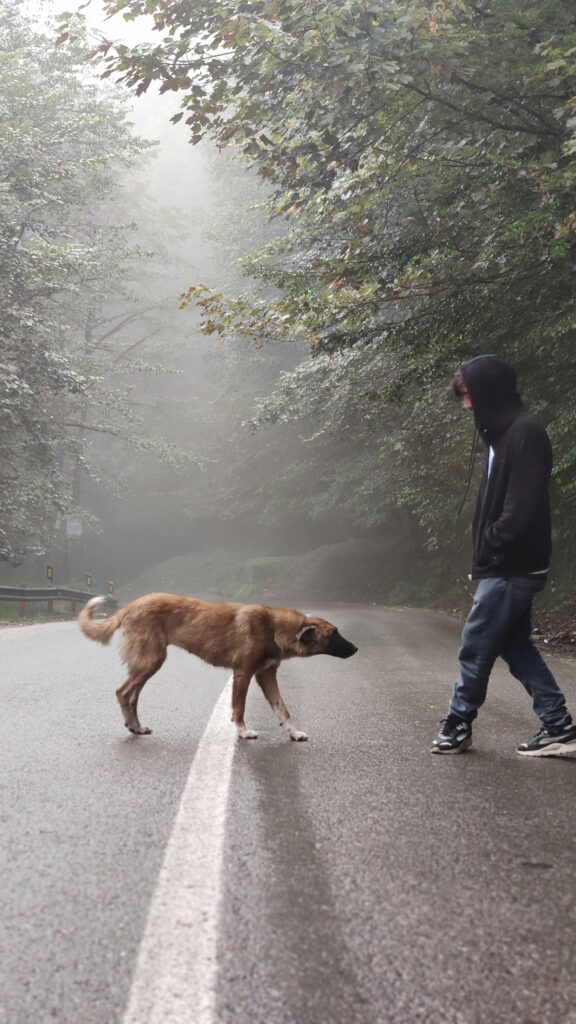
As both a Family Dog Mediator and a parent of a twice-exceptional young adult with autism, I’ve lived in two worlds that share more similarities than most people realize. The same patience, understanding, and individualized approach that helps me work with reactive or “difficult” dogs has been essential in raising my gifted child with autism through years of inflexibility, hyperfocus, and what others might call “stubborn” behavior.
The L.E.G.S.® framework—Learning, Environment, Genetics, and Self—has been my roadmap for both, I just didn’t realized it. Just as we wouldn’t punish a dog for being triggered by their genetics or environment, we can’t expect traditional parenting methods to work for a neurodivergent child whose brain simply processes the world differently.
Learning: Different Doesn’t Mean Deficient
When my child was younger, people would often say, “They’re so smart, but they just won’t…” Fill in the blank: follow directions, transition between activities, work on non-preferred tasks. Sound familiar to anyone who’s heard “Your dog knows better, they’re just being stubborn”?
Both scenarios miss the point entirely. My child wasn’t choosing to be difficult any more than a reactive dog is choosing to lunge at other dogs. They were both responding to their neurological wiring in the only way they knew how.
In dog training, we’ve learned that a dog who can “sit” perfectly at home might completely fall apart at the dog park. Their learning is context-dependent, affected by stress, excitement, and environmental factors. The same is true for individuals with autism. My child could explain complex scientific concepts and conduct detailed research but couldn’t handle the unpredictability of fire drills. They could hyperfocus on special interests for hours but needed extensive support to transition to dinner.
Understanding this meant adjusting our approach. Just as we set dogs up for success by managing their environment and breaking down learning into manageable steps, we learned to scaffold my child’s learning around their strengths while accommodating their processing differences.
Environment: The Hidden Game-Changer
Every dog trainer knows that environment is often the missing piece in behavior modification. A dog might be perfectly behaved at home but reactive on busy streets. Change the environment, change the behavior.
The same principle transformed our family life. We stopped trying to force my child into environments that set them up to fail and started crafting spaces where they could thrive. Noise-canceling headphones for overwhelming spaces. Predictable routines during chaotic times. Quiet corners for decompression.
I remember watching other parents judge us for “accommodating” our child’s needs—the same way some dog guardians judge force-free training as “spoiling” their dogs. But here’s what I learned from both experiences: meeting someone where they are isn’t spoiling them. It’s giving them the foundation they need to succeed.
When we stopped seeing accommodations as weakness and started seeing them as smart management, everything shifted. Just like how we don’t blame a noise-phobic dog for needing a safe space during fireworks, we stopped expecting our child to simply “get over” sensory overwhelm or executive functioning challenges.
Genetics: Playing the Hand You’re Dealt
In dog training, we talk about genetic predispositions all the time. A Border Collie isn’t being “difficult” when they try to herd children—they’re being a Border Collie. A rescue dog with unknown genetics might have triggers we never anticipated.
Autism works similarly. My child’s brain is beautifully, authentically designed differently. Their need for routine isn’t a character flaw—it’s neurological architecture. Their hyperfocus isn’t laziness when they struggle with non-preferred tasks—it’s how their attention system works.
The breakthrough came when we stopped fighting against their genetic makeup and started working with it. Instead of seeing their inflexibility as a problem to fix, we learned to see it as information about how their brain works best. We built structure around their need for predictability, just like we’d manage a genetically anxious dog’s triggers.
This doesn’t mean we never challenged our child to grow—just like we still train dogs with genetic predispositions. But we did it with realistic expectations and appropriate support, honoring who they are while helping them develop coping strategies.
Self: Honoring the Individual
Here’s where both dog training and parenting children with autism get deeply personal. Every dog is an individual, even within breeds. Every person with autism is unique, even with shared characteristics. The methods that work for one might completely backfire with another.
With my child, I had to let go of comparing them to neurotypical peers, just like I help dog families stop comparing their reactive rescue to the perfectly trained Golden Retriever next door. My job wasn’t to make my child “normal”—it was to help them become the best version of themselves.
This meant celebrating their intense interests instead of trying to broaden them. It meant finding their communication style instead of forcing them into neurotypical social norms. It meant understanding that their way of showing love and connection might look different from what I expected.
The Real Magic: Relationship Over Compliance
Both dog training and autism parenting taught me that relationship trumps compliance every time. I could have spent years trying to force my child into neurotypical behaviors, just like dog guardians spend years trying to dominate their way to obedience. But neither approach builds trust or long-term success.
Instead, when I approached both my dogs and my child with curiosity rather than judgment, everything changed. “What are you trying to tell me?” became more important than “Why won’t you just do what I ask?”
Let me be clear—this wasn’t a magic transformation that happened overnight. Even now, I still have moments where I lose my patience, where I default to old patterns of thinking, where I catch myself expecting my child to just “get it” without the support they need. There are days when I’m tired, overwhelmed, and I forget everything I know about neurodivergent brains and start expecting neurotypical responses.
But here’s what I’ve learned: those moments don’t make me a failure as a parent any more than a dog having a reactive episode means their training has failed. They’re both information about stress, capacity, and the need to step back and regroup. When I catch myself slipping into impatience or frustration, I take a deep breath and remember why I’m doing this differently in the first place—because my child deserves to be understood and supported exactly as they are, not molded into who I think they should be.
Now, as my child has grown into a capable young adult, I see the payoff of this approach. They’ve learned to advocate for their needs, develop strategies that work with their brain instead of against it, and build authentic relationships based on mutual understanding.
The same transformation happens with dogs when families stop trying to suppress natural behaviors and start channeling them appropriately. It’s not about lower expectations—it’s about better understanding.
The Takeaway for All Families
Whether you’re living with a dog who resource guards or a child who struggles with transitions, the L.E.G.S.® framework offers a compassionate roadmap. Look at learning styles, modify environments, respect genetics, and honor the individual in front of you.
Both experiences have taught me that “difficult” behaviors are often just misunderstood communication. When we take time to listen—really listen—we usually find that what looks like defiance is actually a nervous system doing its best to cope.
And in both cases, the families who embrace this understanding don’t just solve behavior problems—they build deeper, more authentic relationships based on acceptance and accommodation rather than control and compliance.
That’s the real gift of thinking differently about both dogs and neurodivergent children: we learn that love isn’t about making someone fit our expectations. It’s about understanding who they are and helping them thrive exactly as they are.



Leave a Reply